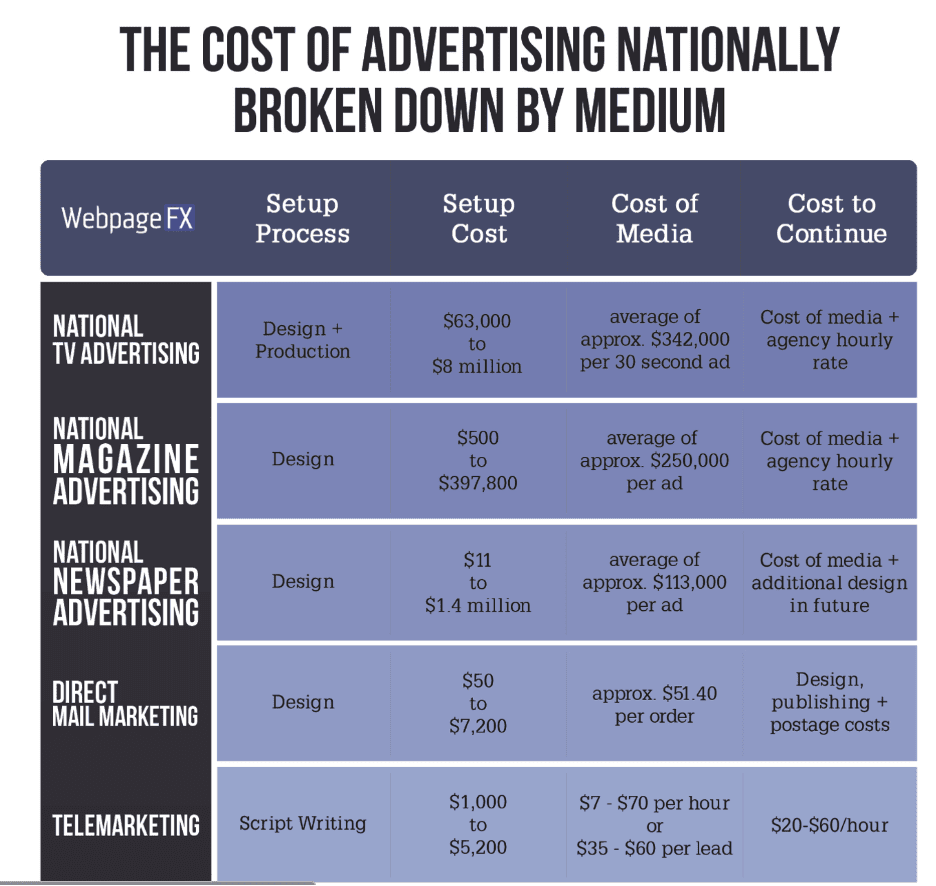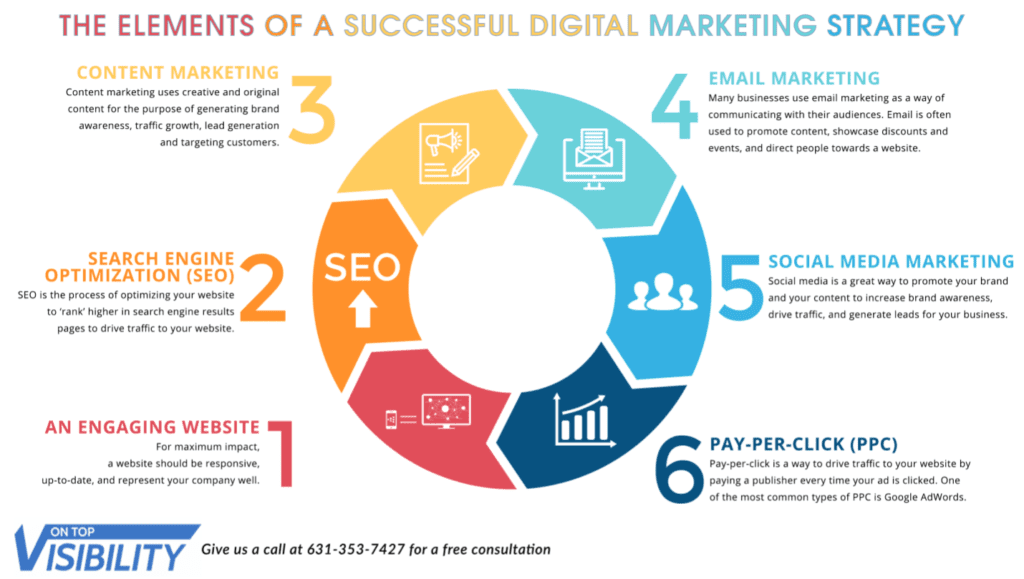With the way marketing and advertising have evolved over the years and how they are being used to capture buyers and prospects’ attention, one can get pretty confused.
There is no doubt that the company directed efforts towards targeted audiences using creative layouts and designs, making the line separation between the two muddy and blurry.
However, there are subtle differences as well as clear differentiating factors that can help you distinguish between the two.
According to a recent study by Small Biz Genius, user acknowledgement matters as 77% of Twitter users appreciate when brands respond to their tweets.
Furthermore, average advertising costs for small business operations such as Google Ads can cost you around $9,000 to $10,000 per month.
Moreover, the average person is bombarded with over 1,700 banner ads per month, but only sees half of them. 88% of B2B marketers consider creating content to help the audience view organizations as trusted and credible.
In light of this information, let’s take a quick look at some of the ways you can differentiate between marketing and advertising.
Promoting Behavior – Promoting Product
Perhaps one of the first differences between marketing and advertising lies in their very definition. While advertising itself is defined as the activity of producing advertisements for commercial products and services, marketing is referred to a broader perspective of promoting your business.
In this sense, we can observe that while advertising is directly related to selling the product or service, marketing is at a much grander scale that envelops activities that create viability of your venture along with what it has to offer.
Take the example of a Mercedes-Benz ad where regardless of the theatrics, the end goal is to showcase their latest model with a purpose to sell them. On the other hand, much of their social media posts are centered on creating awareness for the specs included in their latest and upcoming models to keep customers informed and updated.
Types of Marketing – Types of Advertising
Another way to differentiate between marketing and advertising is to look at their subcategories and types. For instance, common types of marketing nowadays include affiliate marketing, email marketing, print media marketing, relationship marketing, and social media marketing, to name a few.


Much of these type of marketing is about creating awareness about your business, developing bonds with your prospects, and making them familiar with your venture.
On the other hand, common types of advertising include TV commercials, radio infomercials, retail advertising, print media advertising, online advertising, mobile advertising, and PPC (pay per click) advertising, to name a few.
Here the selling intent is much more powerfully felt and observed. In fact, effective advertisements are examined on their ability to generate sales.
Advertising is Paid – Marketing is Much More
When it comes to advertising, whether it is on print or digital format, audio, video, or content, it always requires payment reimbursements.


For example, running a PPC campaign online requires payment, running a TV commercial requires payment; renting a billboard requires payment; however, marketing things can be quite different.
One of the biggest examples of this is the word of mouth marketing where your customers and goodwill ambassadors spread positive awareness about your business and operations.
While a direct payment is not involved, marketing too incurs expenses. In the case of creating and publishing promotional content, costs are relatable to that content’s production. However, in advertising the running cost of the ad is unavoidable.
Difference in Approaches
Marketing can take a much broader approach where it can choose to promote the business and inform and create awareness in customers that can lead to profitable outcomes.


On the other hand, advertising is more ambitious. This is why selling approach is mainly used in advertisements where the entire purpose lies in making sales and getting the buyer to make a purchase.
This is also why many people are irritated to see ads as they can be overwhelmingly persuasive and pressurizing, whereas people are more agreeable to content that offers them information and increase their pool of knowledge.
Furthermore, on many blogging sites, informational and well researched content is given more limelight than overly promotional content based on selling products and services.
Advertising – The Most Expensive in All Marketing Plans
While many people these days are looking for ways to deploy marketing tactics and strategies at a much cheaper rate, advertising, unfortunately, remains largely out of control from such measures.


This is probably because many platforms and mediums of relatively high viewership for advertising are not company-owned.
For instance, running a TV commercial is expensive because many brands are already competing for air time, which raises the cost further, especially during heated events such as Super Bowl Commercials.
On the other hand, much of marketing can be achieved through company-owned assets such as websites, blogs, and social media which is relatively much cheaper than radio ads and print media ads.
Marketing (Pie) – Advertising (Slice of Pie)
For businesses, marketing can entail a lot of things, and while it may share its objective of promoting goods and services offered in line with advertising, its scope is further beyond.
Take goodwill marketing, where companies implement strategies to manage their business image as well as apply reputation management tactics.
While no doubt, in the long run, this can help increase sales and improve the propensity to sell products and services in the offset, it is initially targeted at creating a positive outlook for the venture.
On the other hand, advertising is unquestionably a part of marketing; hence, it is only a slice of the whole pie. Young learners seeking help from maestros so that they can request them to write my dissertation UK should read more and research this topic.


What is Not Advertising but Still a Part of Marketing
Conceivably the best way to answer the different in both marketing and advertising is to realize what isn’t advertising in the first. Take blogging on a website where the prime focus is to create awareness and inform the users.
Is it advertising? Absolutely not, since there is the core focus to help customer solve their problems and while you can leave a mention of your business in the mix, but definitely try to sell your products or services.
Similarly email marketing is profoundly used to keep clients and customers updated with the help of press releases, newsletters, upcoming event, latest updates, and much more.


Likewise, you can take the example of content marketing that utilize various forms of media that is primarily produced with the user’s need and customer’s requirements gaining prominence over you’re the act of selling your products or services.
The Subtle – The Bold & Direct
Lastly, in this day and age of digital media and the internet, people have developed a keen sense to identify what is an ad and what isn’t. Hence, advertisements are often too bold and communicate loudly, whereas marketing is more of a subtle message.
Proponents of subliminal advertising would try to challenge even this claim. However, regardless of these rebuttals, we know that advertising is too obvious to be confused with marketing. This is because if an ad is too meagre in its ability, then it has failed to be an ad in the first place.
Conclusion
As an ending note, I would like to recommend that advertising strategies heavily focus on products and services offered, whereas marketing encircles the entire business operations and promotion.
Advertising is directed towards generating sales, whereas marketing goes beyond that such as building relationships with customers and reputation management for establishments.
I hope I was able to provide you with some meaningful insights as to how marketing and advertising differ from each other while sharing tremendous qualities and similar intentions at the same time. Cheers, and all the best for your future endeavors.
Author Bio
Elaine Vanessa currently works as a Sr. Research Analyst and Blog Writer at Assignment Assistance. This is where higher education students can request to write my essay for me to acquire professional support of experts specializing in their field of study. During her free time, she likes to surf the net for the tech world’s latest developments.





